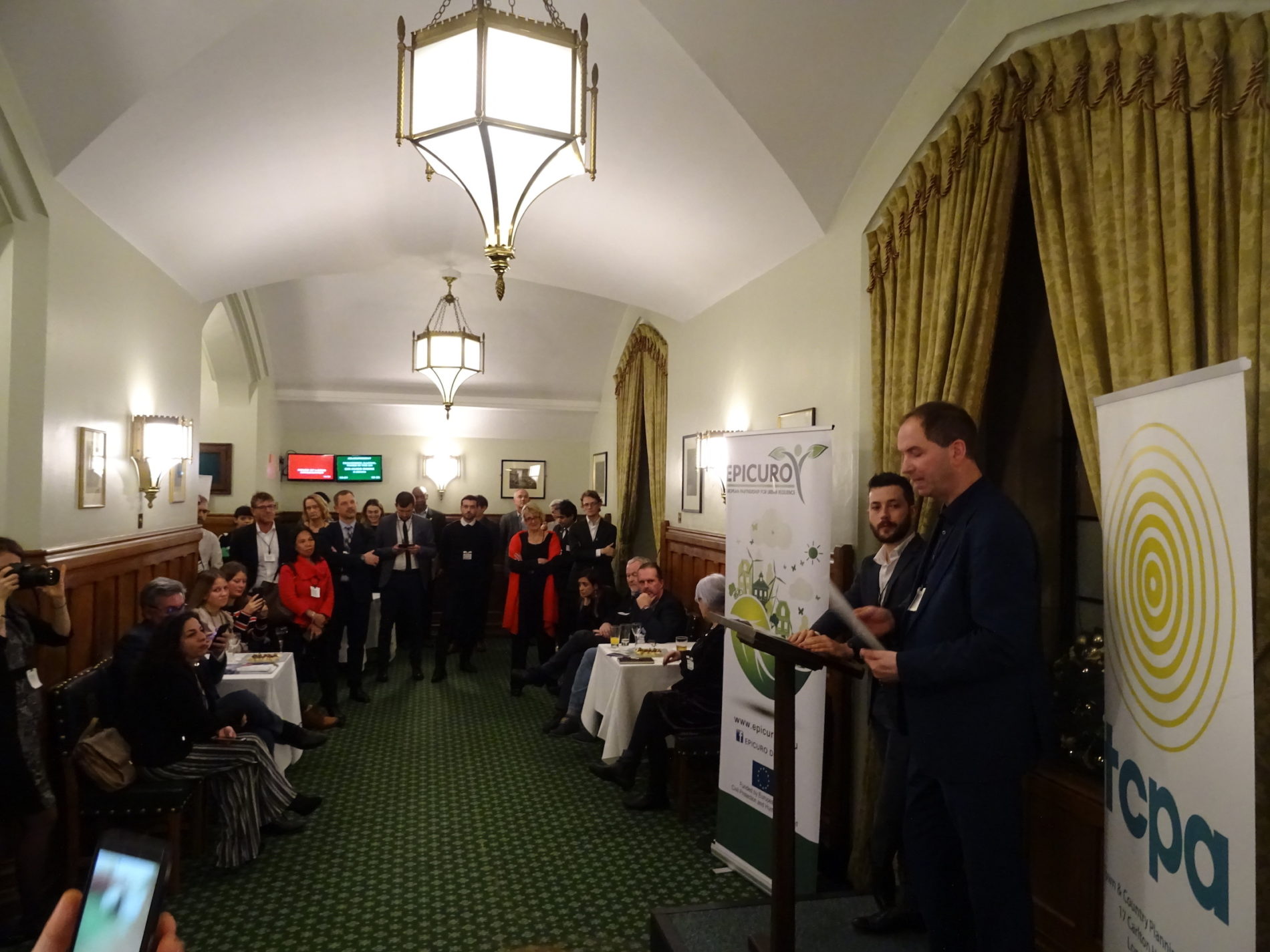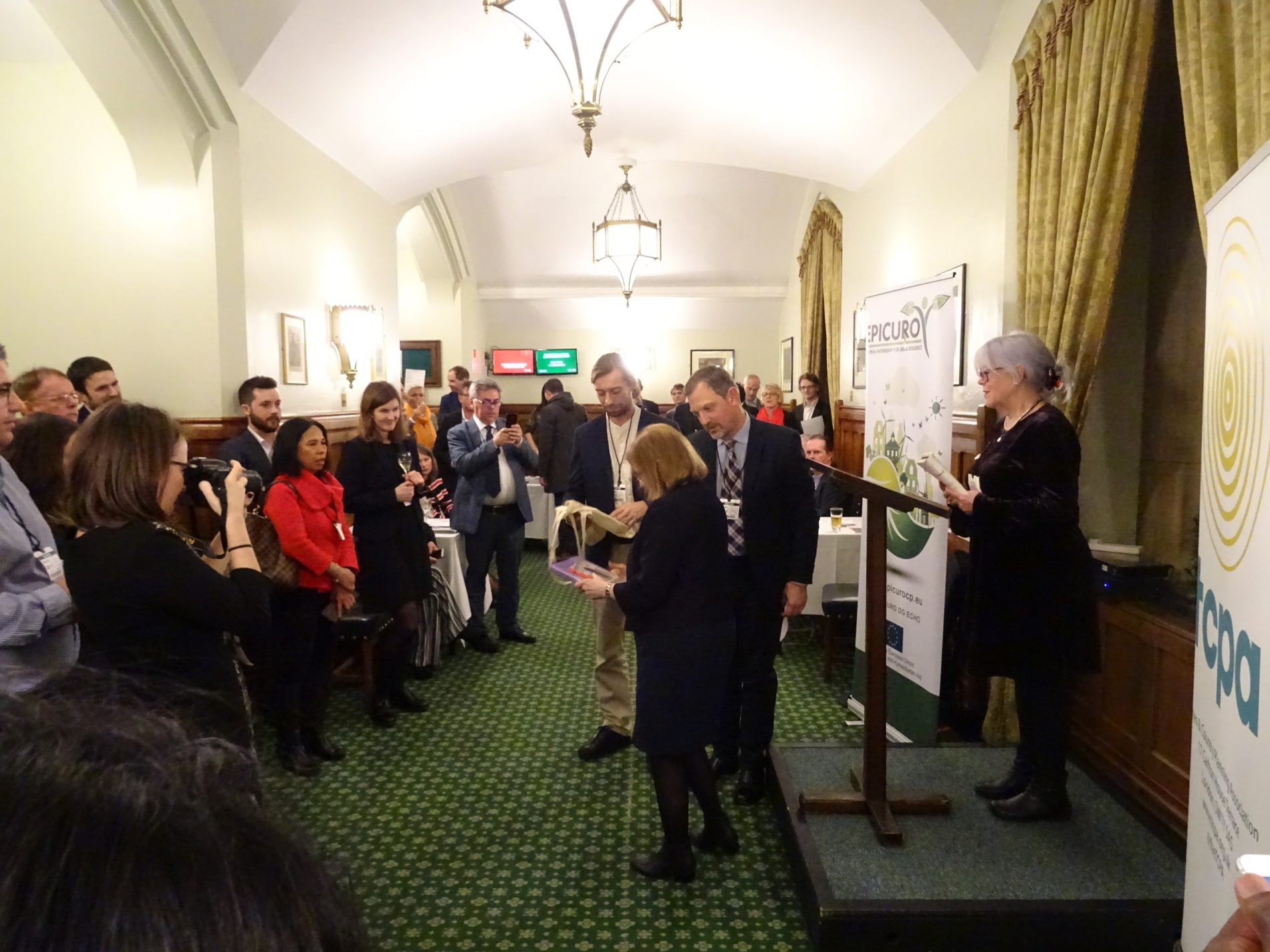It is apparent that climate change is spreading across the globe and even though we have known about its science for decades now, action and adaptability have been slow. Scientists and environmentalists have made it clear that the extreme environmental phenomena we see are enhanced and appear more often as a result of climate change. However policy is still adapting to the new situation. We need to accept that we are not planning for ‘extremes’, but for a ‘new normal’ and therefore various mechanisms need to change or adapt to secure a sustainable future.

In the photo: A city in the snow. Extreme weather conditions, hot or cold, are more common due to climate change. Photo Credit:Joy Real
A call for action comes from a collective initiative led by the Town and Country Planning Association (TCPA UK) and the Royal and Town Planning Institute (RTPI UK), with contributions and support from several institutions, universities and individuals. A guide for local authorities and policy makers has just been published aiming to inform and empower local authorities and policy makers on the way climate change can be addressed in their cities and regions.
Rising to the Climate Crisis; A Guide for Local Authorities on Planning for Climate Change makes clear that the future of this planet and the younger generations is in our hands and relies on our ability to change policy, take radical actions and find innovative ways to deal with environmental uncertainties. It has the intention to primarily support local governments, planners, designers and politicians to create resilient cities and regions, but it also offers a useful tool for educating those who want to know more about current policy and existing pioneer landscape and planning schemes.

In the photo: Hugh Ellis, Interim Chief Executive TCPA launches the Rising to the Climate Crisis; A Guide for Local Authorities on Planning for Climate Change. Photo Credits: Dr Anastasia Nikologianni
The second edition of the Guide was launched at the Houses of Parliament on Thursday 6th December 2018 at a reception hosted by Dr Roberta Blackman-Woods MP in the presence of MPs, policy makers as well as several contributors and interested institutions. TCPA Interim Chief Executive, Hugh Ellis, highlighted the urgency of the climate change crisis and presented the scope of the guide, inviting everyone to acknowledge and support actions related to the environmental challenges we face. The Interim Chief Executive explained that the document is a tool for local authorities and policy makers while addressing areas for which current policy does not have a clear approach.
Institutions such as the Landscape Institute, CATiD BCU, RHS and many more have contributed and endorsed the document in a combined effort to make it approachable for cities and regions. This specific edition focuses more on mitigation and adaptation in relation to energy but provides key ideas on future resilience for planning strategies. Therefore it is significant that landscape design and planning organisations have joined forces to reassure that the fight against climate change is a collaborative effort that needs to have a vision for the whole city/region/country and beyond. The impact legislation has to the climate change front is tremendous and local authorities should be equipped and confident they can create and establish such visions for truly sustainable cities. Spatial planning plays a key role in the low-carbon transition, the establishment of a strategic approach and the engagement of communities. The knowledge and involvement of experts as well as multidisciplinary teams are essential, however this document wants to make sure that local governments and regions are well prepared to act on climate change for their city or region, working on sustainable visions and aiming for low carbon communities.

In the photo: Dr Roberta Blackman – Woods MP welcomes the attendees at the Houses of Parliament. Photo Credits: Dr Anastasia Nikologianni
During the Parliamentary launch the debate turned around the new data revealed by the Intergovernmental Panel on Climate Change (IPCC) last October for 1.5oC temperature target as well as the notion that we have 12 years to limit the climate change catastrophe. We need to act fast and with a strong focus to try and limit these phenomena. Working on a national and international scale is necessary, however this guide makes clear that cities and towns, local and combined authorities are the first to face the climatic effects and therefore at the cutting edge of environmental challenges. While following national and international goals, local governments are responsible for some of the key decisions on local plans that are vital to the resilience of the cities and towns. The Rising to the Climate Crisis; A Guide for Local Authorities on Planning for Climate Change document demonstrates the significance of design and planning to the decision making for sustainable development and presents several existing innovative case studies which aim to address climate change. The wide range of pioneer cases focus on mitigation and adaptation and address various scales and locations. The policy context is emphasised and several plan stages in relation to the adaptation and mitigation compliance frameworks are listed.
Overall, the document is a comprehensive package of strategies and measures aiming to become a tool for local and combined authorities supporting the transition to a climate resilient era. There is a continuous need for many more similar initiatives that will strengthen our understanding and response to climate extremes. This collaboration has shown that the available expertise has great potential, and therefore is our responsibility to the planet, the current and future generations to make good use of it!









